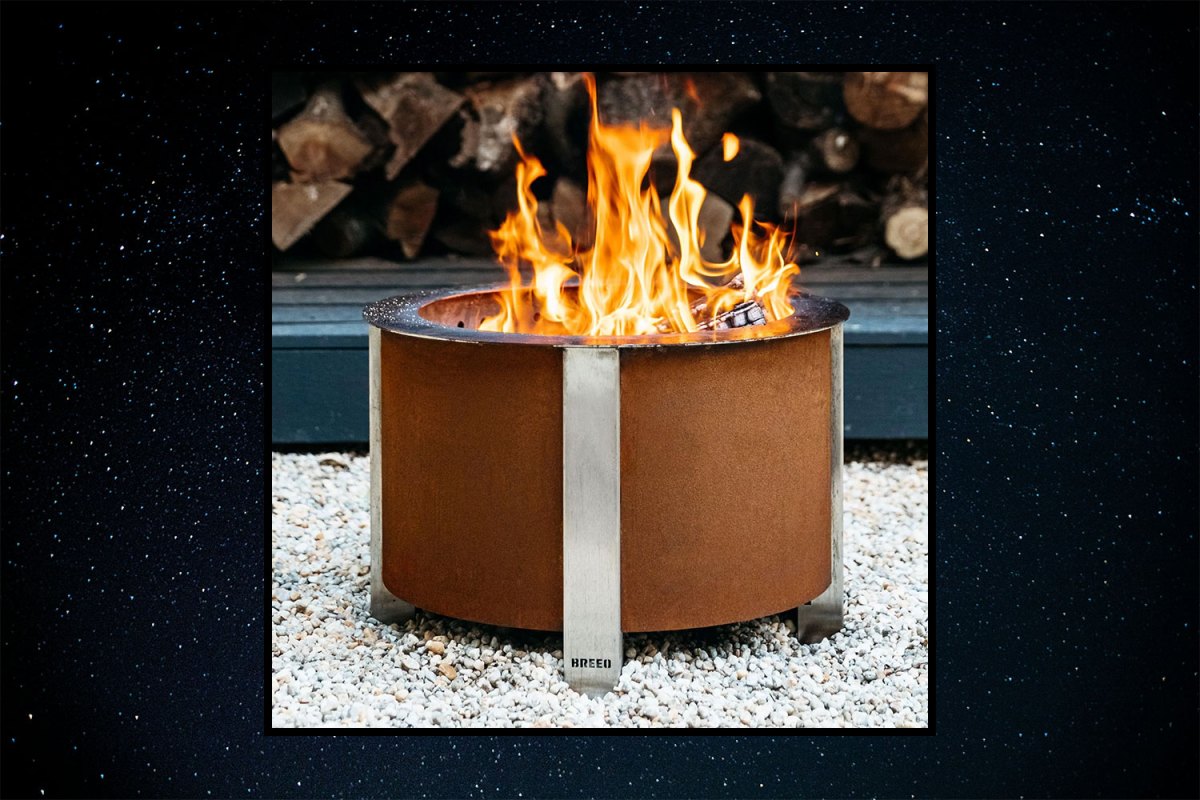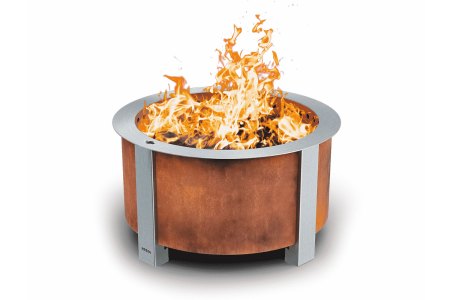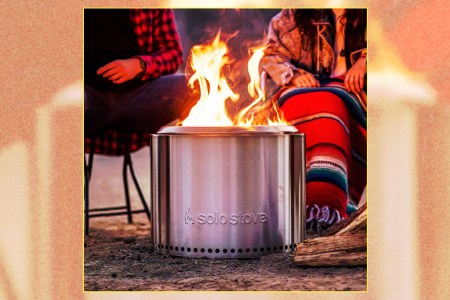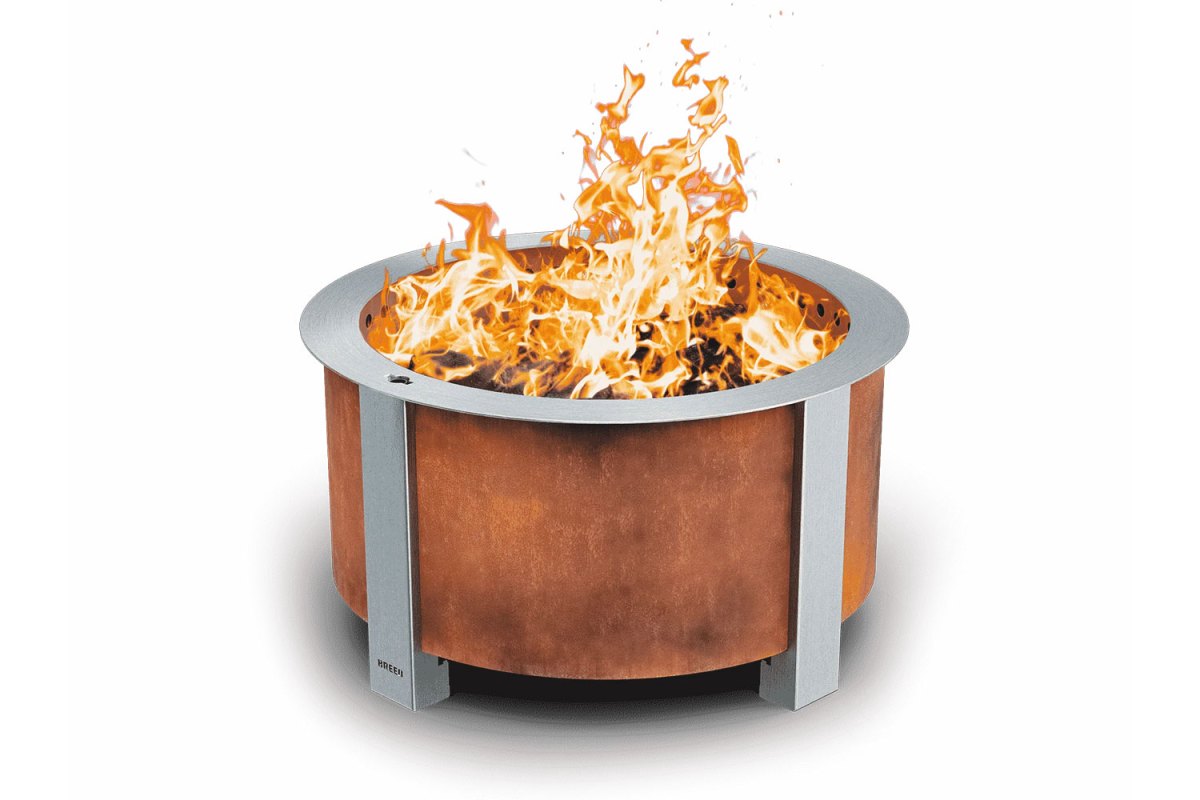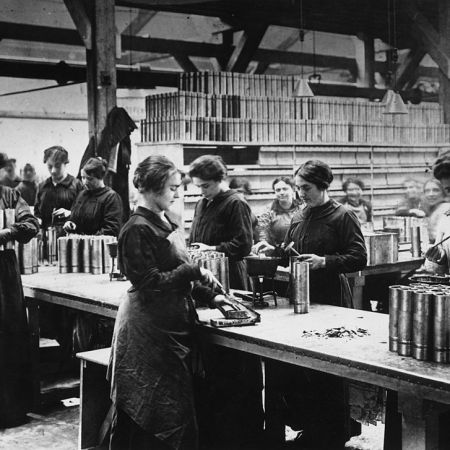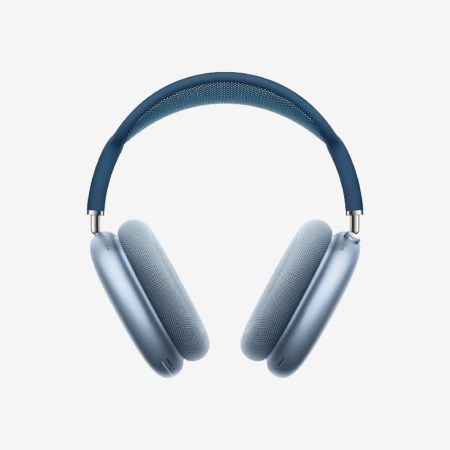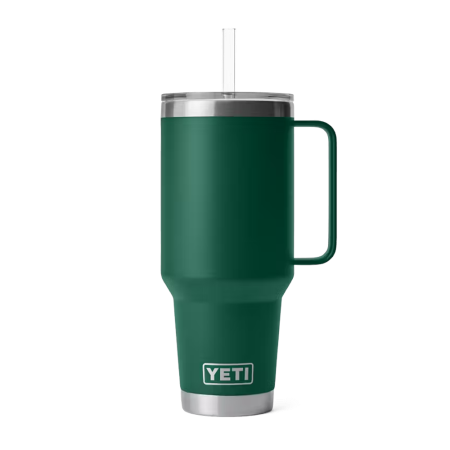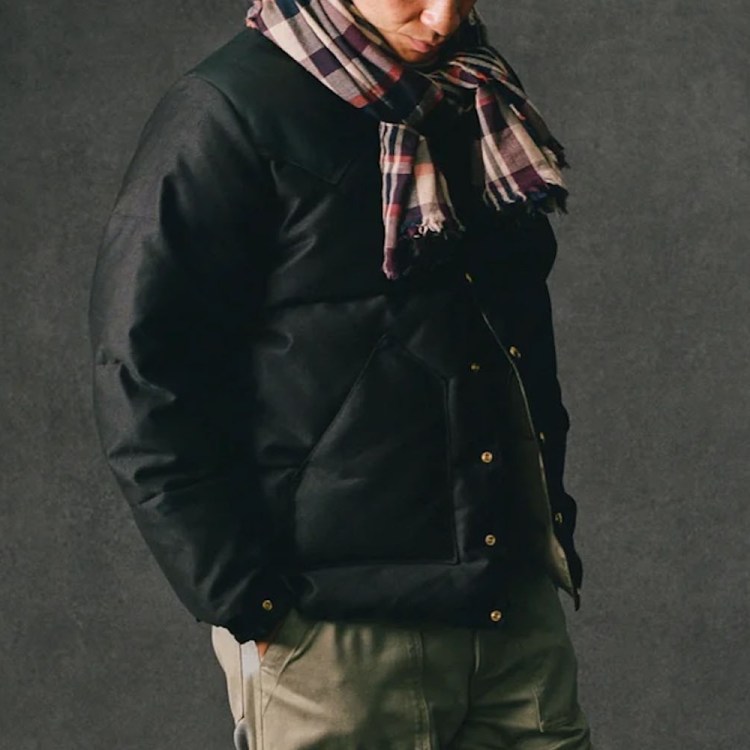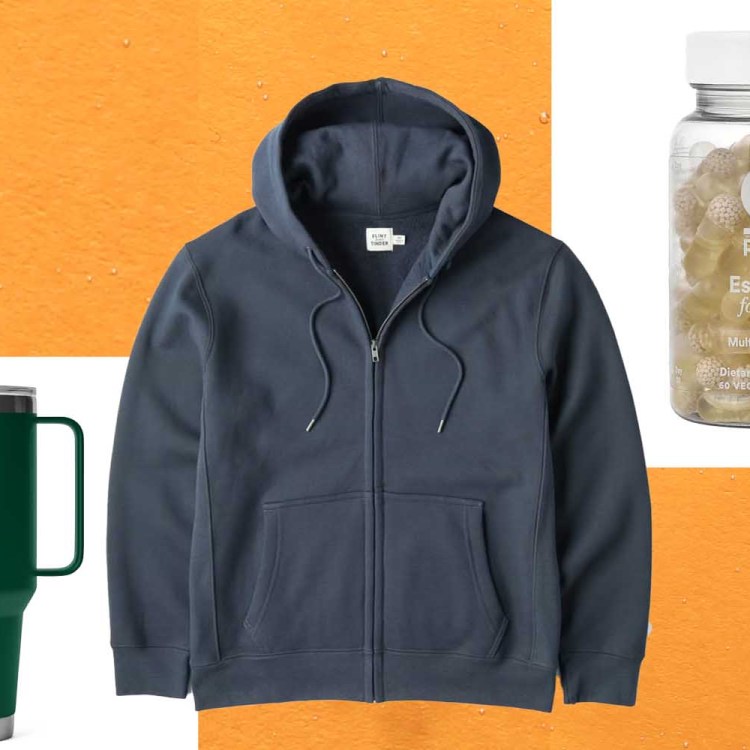Nota bene: All products in this article are independently selected and vetted by InsideHook editors. If you buy something, we may earn an affiliate commission.
It’s summer. You want to build a bonfire, maybe roast a few s’mores with the kids, maybe just kick back next to the flames with an enamel mug with a healthy pour of whiskey. But you don’t have a fire pit. What do you do?
Just a decade ago, the default move might be to waltz down to your local hardware store and buy yourself a fire pit. You know the kind: a metal bowl with some legs, one that costs less than that good bottle of whiskey you’ll be sipping on. It’s not exactly pretty, but that’s not the point. It holds the logs, it keeps the fire off the ground, it gets the job done.
But these days, people seem to want more from their fire pit. Specifically, they want them to be “smokeless.” (The quotes there are intentional, because no “smokeless” fire pit on the market actually gets rid of smoke, it just reduces it. I digress.) During the pandemic, one specific brand of smoke-minimizing fire pits took hold in the collective American I need to get outside consciousness: Solo Stove, those shiny stainless steel buckets, which I currently own and have reviewed.
However, there is another company in this space, one that brands itself as the “original smokeless fire pit” — meaning, they were around before Solo Stove took patios by storm.
It’s called Breeo. Like Solo Stove, they produce high-end fire pits that cost hundreds of dollars and promise a “smokeless burn,” but which one is the bonfire centerpiece to rule them all? I tested a Breeo X Series Fire Pit to find out.

Breeo vs. Solo Stove
I specifically tested the Breeo X24 in corten steel, which I was told is the company’s best-selling fire pit. The model is 27.5 inches in diameter to the outside, which is comparable to the Yukon model from Solo Stove.
So let’s compare the two, shall we? First things first: corten steel, also known as weathering steel, is Breeo’s base material, something Solo Stove does not offer. Breeo does give you the option of choosing bright and shiny stainless steel for an upcharge, but I actually prefer the corten, which arrived in a blue steel finish but will develop a rust patina over time.
Even choosing that more affordable material though, the Breeo is still more expensive than its counterpart. The X24 normally retails for $599 in corten and $799 in stainless steel, while the Solo Stove Yukon is normally priced at $499. However, the X24 is considerably tougher in its build: not only does it feature a four-leg frame around the main pit, whereas the Solo Stove is a streamlined bucket, but it weighs a little over 20 pounds more than the Yukon. The design by which these two enable a hotter burn and less smoke is slightly different: Breeo uses a raised X design in the bottom of their fire pit as well as “double wall construction and secondary combustion holes”; Solo Stove meanwhile uses a similar double wall construction, but with a unique airflow design through holes in the top and bottom.
So why is the Breeo X Series so much more expensive than the admittedly already expensive Solo Stove? (At least in comparison to the aforementioned bargain fire pits?) The design no doubt has something to do with it, but a big factor, too, is that Breeo fire pits are made here in the U.S. while Solo Stove manufactures theirs in China. That doesn’t mean the quality of Solo Stove fire pits is necessarily worse, or that Breeo is inherently better because their models are American-made, but it’s just another factor to consider when making your choice.

Testing the Breeo X Series
So, the big question: How smokeless was the Breeo?
I’ll answer that question with an anecdote. The morning after my first fire in the X24, my wife held up her sweatshirt to me. “Smell this,” she said. I did. Nothing. It smelled like…a normal cotton sweatshirt? Then it dawned on me: growing up here in Minnesota, both of our childhoods were filled with glorious summer nights around bonfires, followed by mornings where all of our clothes smelled like we had rolled around in the ashes after roasting our marshmallows. But the Breeo, while not completely smokeless, has been smokeless enough that we’re not dodging smoke plumes around the fire and smelling like an ashtray in the morning. That’s no small thing.
Review: The Year-Round Versatility of the Solo Stove Bonfire 2.0
The upgraded model features a small but welcome change. But is it really smokeless?In terms of how it compares to the Solo Stove, the difference in the fire itself was negligible. Both are easy to start — much easier than a normal fire pit, as the improved oxygen flow gets the kindling going quickly, as long as it’s dry — and burn extra hot, so the experience is more focused on flames that shoot out of the top of the barrel and less about traditional crackling and smoldering. If you’re looking for a fire pit that allows for a mellow burn, and provides flames at the same time as substantial coals for roasting and other campfire treats, you really shouldn’t buy any smokeless fire pit. But if you want the best of both worlds — less smoke and s’mores — make sure to get a wide model, like the X24 or Yukon, so once the flames abate and you get some coals, you can actually get a poker in there.
Where these two diverge is in everything outside of the burning experience. The Breeo is rougher around the edges, literally — it’s somewhat sharp in places, especially around the lid I got to top it — so you don’t necessarily want kids handling it. Meanwhile, the Solo Stove pieces are generally smoothed out for a more sanitized experience. In terms of cleaning, the Breeo is a little bit more work, as the raised X design in the bottom can build up with ash (they sell a shovel to facilitate easier clean up), while the Solo Stove requires you to simply flip it over and dump out the ashes (or buy their removable ash pan). In terms of build quality, I can’t say I’ve had any problems with the Solo Stove, even after leaving it outside all winter and using it on a frozen lake, but from my short time with the Breeo, the latter does feel like it could withstand anything Mother Nature could throw at it.
Final Verdict
The Breeo X Series is a luxury fire pit, make no mistake about it. But in designing it, the company also clearly thought about making something worthy of being the centerpiece of your backyard or patio. If you get one in corten steel, which will slowly rust over time, you’re essentially getting an exquisite outdoor sculpture that also happens to double as a campfire cauldron. They’re heavier, more expensive and rougher around the edges than the smoke-minimizing fire pits from Solo Stove, but they’re also made in America, if that’s important to you. If you buy one, make sure you get the exact right metal and size, because this thing will likely last you your entire life.
We've put in the work researching, reviewing and rounding up all the shirts, jackets, shoes and accessories you'll need this season, whether it's for yourself or for gifting purposes. Sign up here for weekly style inspo direct to your inbox.
